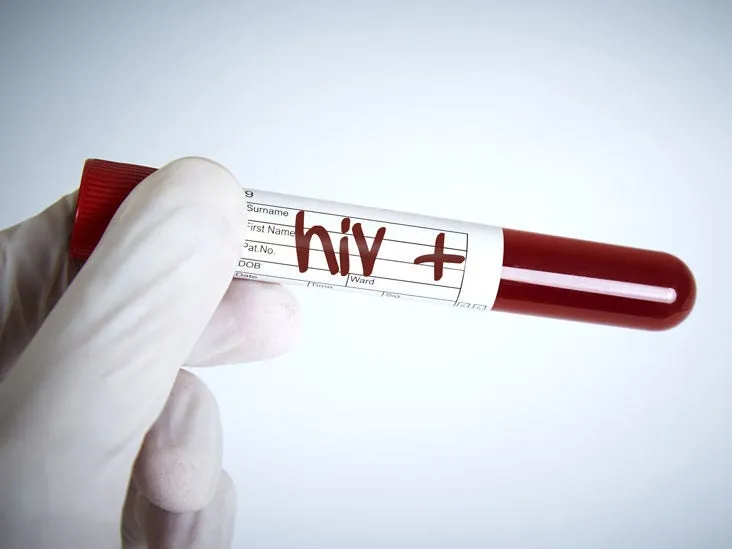Living with inflammatory bowel disease means dealing with unpredictable flare-ups, chronic inflammation, and symptoms that can disrupt daily life. For patients with Crohn’s disease or ulcerative colitis, finding effective treatment options becomes essential for maintaining quality of life and preventing long-term complications.
Infusion therapy delivers specialized biologic medications directly into the bloodstream through an IV, targeting the underlying inflammation that drives IBD symptoms and helping many patients achieve remission. These medications work differently than traditional oral treatments, offering a powerful approach for managing moderate to severe IBD cases.
This treatment option has transformed IBD management by providing targeted relief when conventional therapies fall short. Understanding how infusion therapy works, what patients can expect during treatment, and how healthcare providers personalize these approaches can help individuals make informed decisions about their IBD care plan.
Understanding Infusion Therapy for IBD
Infusion therapy delivers specialized medications directly into the bloodstream to control inflammation and manage symptoms in patients with inflammatory bowel disease. This treatment approach uses biologic medications and other targeted therapies administered through intravenous methods at regular intervals.
What Is Infusion Therapy?
Infusion therapy involves delivering medication or fluids directly into a patient’s bloodstream through a needle or catheter. The process typically occurs intravenously, allowing for precise dosing and rapid absorption.
For IBD patients, infusion therapy serves multiple purposes beyond medication delivery. Some patients receive infusions to replenish essential nutrients like iron or manage dehydration caused by their condition.
The treatment takes place in various settings including:
- Hospital-based infusion centers
- Office-based facilities
- Stand-alone infusion centers
- Home infusion services (depending on insurance coverage)
Patients receiving biologic medications through infusion follow regularly scheduled intervals. The frequency depends on their specific medication type and current disease status.
How Infusion Therapy Works for IBD
Infusion therapy for IBD targets the underlying inflammatory processes that cause Crohn’s disease and ulcerative colitis symptoms. The medications work by blocking specific inflammatory pathways in the immune system.
Biologic therapies delivered through infusion reach therapeutic levels quickly since they bypass the digestive system. This direct delivery method proves especially beneficial for IBD patients whose intestinal absorption may be compromised.
The treatment helps achieve several key outcomes:
- Reduces intestinal inflammation
- Controls active disease symptoms
- Prevents disease flare-ups
- Promotes mucosal healing
Primary medications used include Infliximab, Vedolizumab, and Ustekinumab. These biologic medications have demonstrated effectiveness in inducing remission in IBD patients through clinical studies.
Types of Infusion Therapies Used
Several categories of infusion medication treat different aspects of inflammatory bowel disease. Biologic therapies represent the most common type of infusion treatment for IBD patients.
Anti-TNF biologics like Infliximab block tumor necrosis factor, a key inflammatory protein. These medications work for both Crohn’s disease and ulcerative colitis patients.
Integrin antagonists such as Vedolizumab target gut-specific inflammation pathways. This selectivity reduces systemic immune suppression while maintaining effectiveness.
Interleukin inhibitors like Ustekinumab block specific inflammatory signals. These newer biologic medications offer alternatives for patients who don’t respond to other treatments.
Corticosteroid infusions provide rapid symptom control during severe flare-ups. Healthcare providers typically use these when first-line treatments fail or patients require hospitalization.
Nutritional infusions replace essential nutrients depleted by IBD symptoms. Iron infusions commonly treat anemia, while other formulations address specific deficiencies.
Benefits and Effectiveness of Infusion Therapy
Infusion therapy delivers targeted medication directly into the bloodstream, providing precise dosing for inflammatory bowel disease management. This treatment option shows significant effectiveness in reducing inflammation and achieving sustained remission for patients with moderate to severe symptoms.
Targeted Symptom Relief and Achieving Remission
Infusion therapy works by targeting specific immune system pathways that cause inflammation in the digestive tract. Biologic medications like infliximab and vedolizumab block inflammatory proteins, reducing tissue damage in the intestinal lining.
Patients with moderate to severe Crohn’s disease often experience rapid symptom improvement within weeks of starting treatment. The medications help heal ulcers and reduce bowel wall thickness, leading to decreased abdominal pain and diarrhea.
Remission rates for infusion therapy range from 40-60% in clinical studies. Patients with colitis symptoms frequently achieve mucosal healing, which indicates deep tissue recovery beyond surface-level improvement.
Fistulizing Crohn’s disease responds particularly well to anti-TNF therapies administered through infusion. These complex cases often see fistula closure rates of 30-50% with consistent treatment.
Improving Quality of Life for IBD Patients
Managing a chronic condition like IBD becomes more predictable with regular infusion schedules. Patients report fewer emergency situations and hospital visits when maintaining consistent biologic therapy.
Daily functioning improvements include:
- Reduced fatigue and energy restoration
- Decreased urgency and bathroom frequency
- Better sleep quality due to reduced nighttime symptoms
- Improved nutritional absorption and weight stability
The predictable treatment schedule allows patients to plan work and social activities around infusion appointments. Many patients find the structured approach provides better control over their condition compared to daily oral medications.
Psychological benefits include reduced anxiety about flare-ups and increased confidence in symptom management. Patients often report feeling more in control of their condition rather than constantly reacting to symptoms.
When Infusion Therapy Is Recommended
Gastroenterologists typically recommend infusion therapy when oral medications fail to achieve adequate symptom control. Patients who experience frequent flare-ups despite conventional treatment become candidates for biologic therapy.
Primary indications include:
- Moderate to severe disease activity scores
- Steroid-dependent patients requiring frequent prednisone courses
- Complications like strictures or fistulas
- Poor response to immunomodulators after 3-6 months
The decision involves evaluating disease severity through colonoscopy findings and inflammatory markers. Patients with extensive ulceration or deep tissue involvement often benefit most from infusion-based biologics.
Specialists also consider infusion therapy for patients experiencing medication intolerance or absorption issues with oral treatments. The intravenous delivery bypasses digestive system problems that might interfere with drug effectiveness.
What to Expect During Infusion Therapy
Infusion therapy for IBD involves receiving medication directly into the bloodstream through an IV line at a specialized infusion center. Patients can expect a structured process that includes preparation steps, monitored treatment sessions lasting minutes to several hours, and regular scheduling based on individual treatment plans.
Preparing for Your Infusion Appointment
Patients should arrive at the infusion center a few minutes early for their first appointment. This extra time allows for check-in procedures and completing any required paperwork.
First-time patients typically undergo additional screening and monitoring protocols. The healthcare team reviews medical history and current medications before beginning treatment.
Essential items to bring:
- Insurance cards and identification
- Current medication list
- Comfortable clothing with easy sleeve access
- Entertainment items like books or tablets
- Light snacks and water
Patients should eat a regular meal before their appointment to maintain stable blood sugar levels. The healthcare provider will provide specific pre-treatment instructions based on the prescribed medication and individual health status.
The Infusion Process: Step by Step
The infusion process begins when a trained nurse inserts a needle or catheter into a vein, typically in the arm or hand. This IV line serves as the direct pathway for medication delivery into the bloodstream.
Medical staff monitor vital signs throughout the entire procedure to ensure patient safety. Blood pressure, heart rate, and temperature readings occur at regular intervals during treatment.
Typical infusion timeline:
- Setup and IV insertion – 15-30 minutes
- Pre-medication administration – 30-60 minutes
- Main medication infusion – 2-4 hours
- Post-treatment monitoring – 30-60 minutes
The treatment duration varies depending on the specific IBD medication prescribed. Infliximab treatments typically require 2-3 hours, while vedolizumab infusions may take slightly longer.
Patients can read, use electronic devices, or rest during the infusion process. Most infusion centers provide comfortable reclining chairs and a relaxed environment.
Potential Side Effects and Safety Monitoring
Healthcare providers closely monitor patients for immediate reactions during infusion treatments. Common mild side effects include headache, fatigue, or slight nausea that typically resolve quickly.
Signs requiring immediate attention:
- Difficulty breathing or chest tightness
- Severe headache or dizziness
- Skin rash or hives
- Unusual swelling
Nurses check vital signs every 30 minutes during active infusion. They also assess the IV site for signs of irritation or infiltration.
Most IBD patients tolerate infusion therapy well with minimal side effects. The medical team maintains emergency protocols and medications on-site to address any adverse reactions promptly.
Long-term safety monitoring includes regular blood tests to check liver function and immune system status. Patients receive detailed instructions about symptoms to report between appointments.
Scheduling and Maintenance of Infusion Therapy
Infusions are scheduled based on the specific medication regimen and patient response. Initial treatments often occur more frequently, then extend to maintenance intervals of 4-8 weeks.
The healthcare provider determines the optimal scheduling pattern after evaluating treatment response and symptom control. Some patients require dose adjustments or timing modifications over time.
Typical scheduling patterns:
- Infliximab: Weeks 0, 2, 6, then every 8 weeks
- Vedolizumab: Weeks 0, 2, 6, then every 8 weeks
- Ustekinumab: Initial dose, then every 8 weeks
Patients should maintain consistent appointment timing for optimal medication effectiveness. Most infusion services offer flexible scheduling options to accommodate work and personal commitments.
Treatment duration varies by individual response and disease activity. Some patients continue infusions for years, while others may transition to different therapies based on their healthcare provider’s recommendations.
Personalized Infusion Therapy and Ongoing Management
Effective IBD management requires close collaboration between patients and gastroenterologists to create a personalized treatment plan that addresses individual symptoms and disease patterns. Treatment plans must adapt to changing disease activity and patient response over time.
Working with Your Gastroenterologist
A gastroenterologist serves as the primary coordinator for personalized infusion therapy decisions. They evaluate disease severity, previous treatment responses, and specific symptoms to determine the most appropriate biologic medication.
Initial Assessment Process:
- Review of medical history and current symptoms
- Analysis of previous medication responses
- Laboratory tests to assess inflammation markers
- Imaging studies to evaluate disease extent
At LocalMD.NYC, Dr. Kevin Tin provides expert care for IBD patients requiring infusion therapy. His approach focuses on thorough evaluation before recommending specific medications designed to target specific components of the immune system.
Regular consultations allow gastroenterologists to monitor treatment effectiveness. They track symptom improvements, review laboratory results, and assess quality of life changes. This ongoing evaluation ensures the treatment plan remains optimal for each patient’s needs.
Patients should maintain open communication about symptom changes between appointments. This information helps gastroenterologists make timely adjustments to prevent disease flares or medication complications.
Customizing the Treatment Plan
Each patient receives a treatment plan tailored to their specific IBD presentation and lifestyle needs. Gastroenterologists consider factors such as disease location, severity, and patient preferences when selecting biologic medications.
Key Customization Factors:
- Disease type (Crohn’s disease or ulcerative colitis)
- Location of inflammation in the digestive tract
- Previous medication history and allergies
- Patient age and overall health status
- Work and family commitments
The selection of specific medications depends on which components of the immune system require targeting. Some biologics block TNF-alpha proteins, while others target different inflammatory pathways.
Infusion frequency varies based on the chosen medication and patient response. Most patients receive treatments every 4-8 weeks, but schedules may be adjusted based on symptom control and laboratory results.
At LocalMD.NYC locations in Brooklyn (6219 5th Avenue, Brooklyn, NY 11220, +1 718-475-0065) and Maspeth (71-16 Grand Ave, Maspeth, NY 11378, 718-307-1577), treatment plans are developed through comprehensive patient consultations.
Transitioning Between Medications and Adjusting Dosage
Medication transitions occur when current treatments lose effectiveness or cause unacceptable side effects. Gastroenterologists carefully plan these transitions to minimize disease flares during the changeover period.
Common Transition Scenarios:
- Primary medication failure (lack of initial response)
- Secondary loss of response over time
- Development of medication-related side effects
- Insurance coverage changes requiring alternative options
Dosage adjustments may be necessary based on patient weight, symptom severity, and treatment response. Some patients require dose escalation to maintain remission, while others may benefit from extended dosing intervals.
Laboratory monitoring guides dosage decisions. Blood tests measure medication levels and inflammatory markers to ensure optimal therapeutic effects. These results help determine whether dose increases or medication switches are necessary.
The transition process typically involves a washout period between medications or gradual dose reduction of the previous treatment. Gastroenterologists monitor patients closely during transitions to detect any symptom worsening or complications.
Bridge therapy with corticosteroids may be used temporarily during medication transitions to maintain symptom control. This approach prevents disease flares while the new biologic medication reaches therapeutic levels.
Frequently Asked Questions
Patients considering infusion therapy for IBD often have concerns about side effects, medication options, treatment frequency, and costs. Understanding these aspects helps patients make informed decisions about their treatment plan.
What are the common side effects associated with infusion therapy for managing IBD symptoms?
Common side effects include infusion reactions such as headache, nausea, fatigue, and allergic reactions at the injection site, while some patients may experience increased risk of infections due to immune system suppression.
Which new medications for infusion therapy are available for ulcerative colitis treatment?
Newer biologic medications include vedolizumab, which targets gut-specific inflammation, and ustekinumab, which blocks specific inflammatory pathways, alongside established options like infliximab and adalimumab.
How do biologic infusions for ulcerative colitis work to control the disease?
Biologic infusions work by targeting specific proteins and inflammatory pathways that cause intestinal inflammation, blocking immune system responses that damage the colon lining and reducing symptoms like bleeding and diarrhea.
What types of infusions are commonly used in the treatment of inflammatory bowel disease?
The most commonly used infusions include TNF-alpha inhibitors like infliximab, integrin inhibitors such as vedolizumab, and interleukin inhibitors like ustekinumab, each targeting different inflammatory mechanisms.
What is the cost range for infusion therapy in the management of ulcerative colitis?
Infusion therapy costs typically range from $10,000 to $30,000 annually, with variations based on medication type, dosing frequency, and insurance coverage, though many insurance plans cover these treatments.
How often are infusions required for the effective management of IBD symptoms?
Most patients receive infusions every 4 to 8 weeks after initial loading doses, with the exact schedule depending on the specific medication, disease severity, and individual patient response to treatment.






